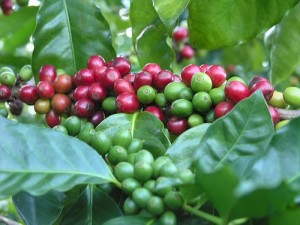I read recently that Honoré de Balzac took his coffee very seriously. He made his own special blend from three specific beans that could only be found in separate neighborhoods of Paris, necessitating a journey that took no less than half a day every time he needed to concoct a new batch. He eschewed common preparation methods in favor of the complex Chaptal-style coffeemaker, and during periods when he was actively writing, he lived on little more than fruit and coffee. Balzac said, of coffee’s influence, “Ideas swing into action like battalions in the Great Army on a battlefield…Memories enlist at the double…and flashes of inspiration join the skirmish; faces take form; the paper is soon covered in ink.”*
You might think that the attention Balzac paid to coffee sounds so extreme that it has the ring of fiction, that it can be easily dismissed as no more real than the obsessive attributes of his characters. At some point, I probably would have agreed with you. And then I started working at Solid State.
Ask anyone at the small IT firm and they will stridently claim that they are not coffee experts, merely hobbyists, but they will say it in the same breath as they deride the tobacco undertones to the most recent inferior cup they happened upon. Jeff introduced the idea of roasting their own beans, Roger offers tasting notes on every batch like the oenophile he is, and Dominic waxes rhapsodic about the temperature point at which the juices inside each bean caramelize. Balzac would feel at home there, even if he were not a computer technician.
When I first started working there as the bookkeeper, I’m not sure I fully grasped the gravity of the office coffee ritual. How much resolve it must have taken for them to resist pointing out the obvious blunders I was making when I was readying a carafe of French press in those early days: the imprecision of my measurements, the wonton disregard for the timing of the grind, the neglect of the steady clockwise pour. It was only gradually, through observation, that my coffee making skills improved, and only through a leap of faith that they began to trust me with a process far more delicate than reconciling their bank accounts: the roasting of the green coffee beans.
It is the roasting that raises the whole enterprise to an art form, and it was when Dominic taught me how to do it that I became a convert to the coffee religion. Our roaster looks like a little toaster oven, and it can only handle about a half pound of beans at a time. Every time we plug it in, it makes a mess of flaky little bean husks, produces a burning smell that is essentially an instant headache, and, if handled correctly, turns out heavenly coffee. But it is not as simple as keying in a preset roasting program. You must listen to the coffee. You must feel the coffee.
To get the deep robust flavor favored in our office, you have to get the coffee to “second crack.” First crack is when the water evaporates from the bean, producing a sound that, according to Dom, is like this: “Pop…pop….pop.” Then there is a weighty moment of silence, followed by the second crack, when the oils in the bean reach boiling point: poppity, pop, pop, pop. Timing is everything here; hit the cool down button before second crack and the coffee comes out mottled and ugly and tasting strongly of grass. Hesitate a moment too long and the coffee will be burnt and undrinkable. Nothing can fill me with culinary anxiety like that space of a few minutes between first and second crack. I turn off whatever music anyone is enjoying, shut down the growling air conditioner, slam closed the window to drown out any external noise, and gaze with anticipation into the glowing innards of the coffee roaster until I sense the right instant descend upon me like the wingbeat of an angel.
Why do I care? That’s a hard question to answer. I do enjoy the taste of coffee, but somehow the pleasure of the intricate ritual exceeds any pleasure of the taste buds. Would Balzac have enjoyed his exquisite blend so much if he hadn’t devoted so much time to it? Maybe it is because I am a writer, the one employee who does not understand the intricacies of computer networking, nor the exact scientific principles behind coffee roasting, that I appreciate this melding of exactitude and intuition and maybe just luck. There, in that silence before second crack, is where art meets science. I can feel it, and I’d bet that if Balzac were sitting with me at my desk, he would feel it, too.
*Thanks to Anka Muhlstein and her book Balzac’s Omelette for the details on Balzac.


HA! I love this! Well done.